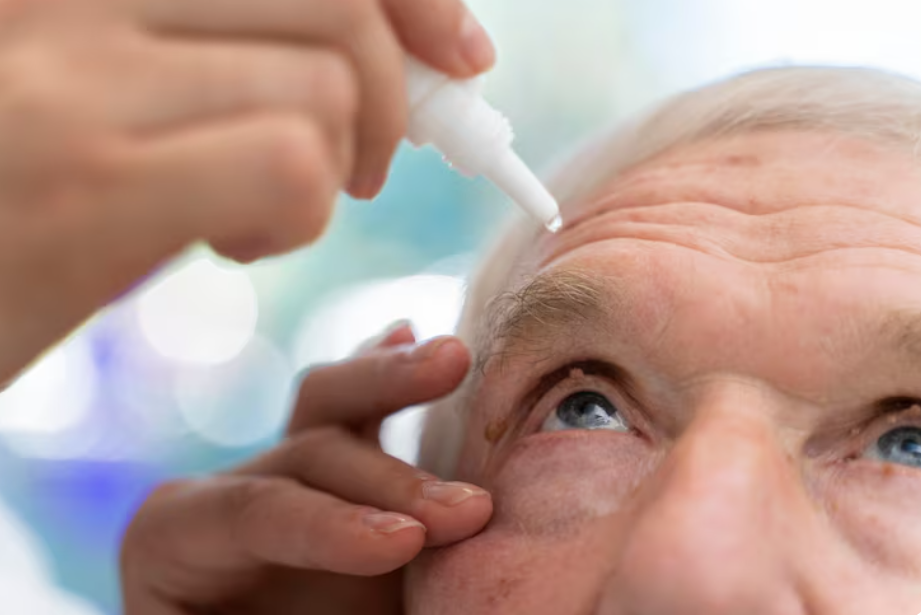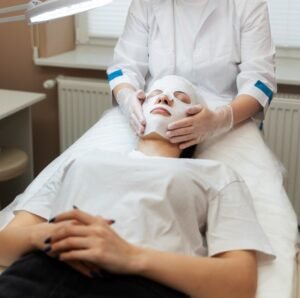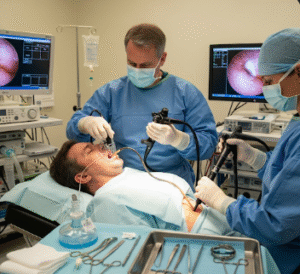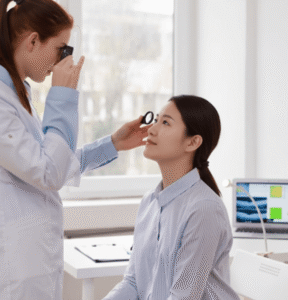Overview
Cataract is a condition characterized by clouding of the natural lens of the eye, leading to blurred vision and, if untreated, potential vision loss. It is one of the most common causes of visual impairment, especially in older adults. While age-related cataracts are most prevalent, cataracts can also develop due to genetics, trauma, or certain medical conditions. Early diagnosis and timely treatment can restore vision effectively.
What is Cataract?
A cataract occurs when proteins in the lens of the eye clump together, causing cloudiness that prevents light from passing clearly to the retina. Cataracts may affect one or both eyes and can progress slowly or rapidly, depending on the underlying cause. They are typically painless but can significantly reduce quality of life by impairing vision.
Symptoms
- Blurred or cloudy vision
- Difficulty seeing at night
- Sensitivity to light and glare
- Seeing halos around lights
- Frequent changes in eyeglass or contact lens prescriptions
- Fading or yellowing of colors
- Double vision in one eye
Causes
- Aging (most common cause)
- Genetic predisposition
- Eye injuries or trauma
- Long-term use of corticosteroids
- Diabetes and other systemic conditions
- Prolonged exposure to ultraviolet (UV) light
- Smoking and excessive alcohol consumption
- Previous eye surgery or inflammation
Risk Factors
- Age over 60 years
- Family history of cataracts
- Diabetes or metabolic disorders
- Prolonged UV exposure
- Smoking and alcohol use
- Eye trauma or inflammation
- Long-term corticosteroid use
Complications
- Vision impairment affecting daily activities
- Increased risk of falls and accidents due to poor vision
- Secondary glaucoma
- Reduced quality of life and independence
- Rarely, lens dislocation or other ocular complications
Prevention
- Regular eye examinations for early detection
- Wearing UV-protective sunglasses
- Controlling blood sugar in diabetes
- Avoid smoking and limit alcohol consumption
- Maintain a healthy diet rich in antioxidants and vitamins
- Use protective eyewear during activities with eye injury risk
Treatment Options in Korea
South Korea offers world-class ophthalmology services for cataract diagnosis and treatment:
- Diagnosis
- Comprehensive eye exams
- Slit-lamp examination
- Visual acuity and refraction tests
- Retinal evaluation to rule out other eye conditions
- Non-Surgical Management
- Prescription eyeglasses or magnifying lenses for mild cataracts
- Lifestyle adaptations (lighting adjustments)
- Surgical Treatment
- Phacoemulsification (most common method) with intraocular lens (IOL) implantation
- Femtosecond laser-assisted cataract surgery for precise lens removal
- Monofocal, multifocal, or toric lenses to correct vision
- Post-Surgical Care
- Topical eye drops for infection and inflammation prevention
- Follow-up eye exams to monitor healing
- Temporary activity restrictions to ensure proper recovery













